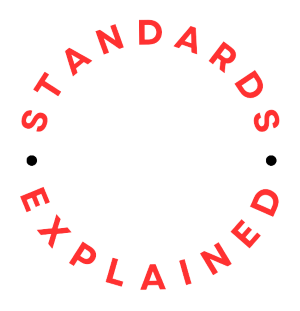ISO 31030:2021 Travel risk management — Guidance for organizations gives guidance to organizations on how to manage the risks, to the organization and its travellers, as a result of undertaking travel. It provides a structured approach to the development, implementation, evaluation and review of:
- policy;
- programme development;
- threat and hazard identification;
- opportunities and strengths;
- risk assessment;
- prevention and mitigation strategies.
ISO 31030 is applicable to any type of organization, irrespective of sector or size, including but not limited to:
- commercial organizations;
- charitable and not-for-profit organizations;
- governmental organizations;
- non-governmental organizations;
- educational organizations.
The standard does not apply to tourism and leisure-related travel, except in relation to travellers travelling on behalf of the organization.
What does it cover?
| Introduction |
| 1 Scope |
| 2 Normative references |
| 3 Terms and definitions |
| 4 Understanding the organization and its context |
| 4.1 Operating context |
| 4.2 Stakeholders |
| 4.3 Travelling population |
| 4.4 Business objectives, risk appetite and criteria |
| 4.5 Travel risk management and delivery |
| 5 Managing travel risk |
| 5.1 Leadership and commitment |
| 5.2 Policy |
| 5.3 Roles, responsibilities and accountability |
| 5.4 Objectives |
| 5.5 Planning/establishing the programme |
| 5.6 Implementation |
| 6 Travel risk assessment |
| 6.1 General |
| 6.2 Risk identification |
| 6.3 Risk analysis |
| 6.4 Risk evaluation |
| 7 Travel risk treatment |
| 7.1 General |
| 7.2 Risk avoidance |
| 7.3 Risk sharing |
| 7.4 Risk reduction |
| 8 Communication and consultation |
| 8.1 Programme/strategic communications |
| 8.2 Operational/technical communications |
| 9 Programme monitoring and review |
| 9.1 General |
| 9.2 Surveys |
| 9.3 Benchmarking |
| 9.4 Metrics |
| 10 Programme recording and reporting |
| 10.1 General |
| 10.2 Documentation |
| 10.3 Recording and reporting |
| Annex A Development and implementation of a TRM programme |
| Annex B Minors travelling without legal guardians |
| B.1 General |
| B.2 Roles and responsibilities (guardians, chaperones and organizations) |
| B.3 Appropriate documentation and preparation |
| B.4 Clear and concise communications |
| B.5 Expenditure |
| Annex C Travel considerations during global disruption |
| Annex D Risk treatment restrictions |
| Annex E Training |
| E.1 General |
| E.2 Content of training |
| E.3 Training evaluation |
| Annex F Considerations for accommodation in higher-risk locations |
Applying ISO 31030
Here are the main steps in applying travel risk management principles for organizations in conformity with ISO 31030.
Establish Governance and Leadership Support
- Obtain leadership commitment to implement travel risk management principles.
- Establish a governance structure responsible for overseeing travel risk management processes.
Define Scope and Objectives
- Determine the scope of travel risk management activities, including types of travel and geographical regions.
- Define clear objectives aligned with the organization’s risk management strategy and goals.
Risk Assessment and Analysis
- Conduct a comprehensive risk assessment to identify potential hazards and threats associated with travel.
- Analyze the likelihood and potential impact of identified risks on travellers and business operations.
Risk Mitigation Planning
- Develop risk mitigation plans to address identified travel-related risks and vulnerabilities.
- Implement measures to reduce or eliminate risks, including pre-travel preparations, security protocols, and emergency response procedures.
Travel Policy Development
- Develop and implement a travel policy that outlines the organization’s requirements and procedures for travel risk management.
- Ensure compliance with relevant legal and regulatory requirements.
Traveller Training and Awareness
- Provide training and awareness programs to educate travellers about travel risks, safety precautions, and emergency procedures.
- Equip travellers with the knowledge and skills necessary to mitigate risks and respond effectively to emergencies.
Pre-Travel Preparation
- Establish pre-travel preparation procedures, including risk assessments, health screenings, and itinerary reviews.
- Provide travellers with resources and support to make informed decisions about travel arrangements and accommodations.
Communication and Monitoring
- Establish communication channels for travellers to receive real-time updates and alerts about potential risks and emergencies.
- Implement monitoring systems to track travellers’ whereabouts and assess their well-being during travel.
Crisis Management and Response
- Develop a crisis management plan to guide the organization’s response to travel-related emergencies, such as natural disasters, political unrest, or medical crises.
- Establish protocols for communication, evacuation, medical assistance, and coordination with local authorities and emergency services.
Traveller Support and Assistance
- Provide travellers with access to support services, such as travel assistance programs, emergency hotlines, and medical evacuation services.
- Offer assistance with travel arrangements, rebooking, and repatriation in the event of travel disruptions or emergencies.
Post-Travel Review and Analysis
- Conduct post-travel reviews to evaluate the effectiveness of travel risk management measures and identify areas for improvement.
- Document lessons learned and best practices to inform future travel planning and risk mitigation efforts.
Continual Improvement
- Continually monitor and review travel risk management processes to identify emerging risks and adapt to changing circumstances.
- Incorporate feedback from travellers and stakeholders to enhance the effectiveness and efficiency of travel risk management practices.
Compliance and Legal Considerations
- Ensure compliance with relevant legal and regulatory requirements related to travel risk management, including duty of care obligations and data protection regulations.
- Stay informed about changes in travel advisories, health guidelines, and security protocols that may affect travel risk management practices.
Supplier and Partner Engagement
- Collaborate with travel suppliers, service providers, and business partners to ensure alignment with travel risk management requirements and standards.
- Establish contractual agreements and performance criteria to hold suppliers accountable for delivering safe and secure travel services.
Technology and Innovation
- Leverage technology solutions, such as travel risk management platforms, mobile apps, and geolocation tracking systems, to enhance the efficiency and effectiveness of travel risk management processes.
- Explore innovative approaches, such as artificial intelligence and predictive analytics, to anticipate and mitigate travel-related risks.
Data Security and Privacy
- Ensure the security and privacy of traveller information collected and processed as part of travel risk management activities.
- Implement robust data protection measures and adhere to data privacy regulations to safeguard sensitive information.
Collaboration with Internal Stakeholders
- Foster collaboration and coordination among internal stakeholders, including human resources, security, legal, and finance departments, to ensure a holistic approach to travel risk management.
- Align travel risk management efforts with broader organizational objectives and risk management strategies.
Engagement with External Stakeholders
- Engage with external stakeholders, such as government agencies, industry associations, and peer organizations, to share information, best practices, and lessons learned in travel risk management.
- Participate in industry forums and working groups focused on enhancing travel safety and security.
Training and Development
- Invest in training and development programs for travel risk management professionals to enhance their skills, knowledge, and capabilities.
- Provide opportunities for professional certifications and ongoing education in relevant areas, such as crisis management, security, and emergency response.
Benchmarking and Performance Measurement
- Benchmark the organization’s travel risk management practices against industry standards, best practices, and peer benchmarks.
- Establish key performance indicators (KPIs) and metrics to measure the effectiveness and efficiency of travel risk management efforts, such as incident response times, traveller satisfaction, and cost-effectiveness.
In conclusion…
By following these steps and adhering to ISO 31030 principles, organizations can effectively manage travel-related risks and ensure the safety, security, and well-being of their employees during travel activities.
ISO 31030 can be purchased through the ISO.org website.














Comments (0)